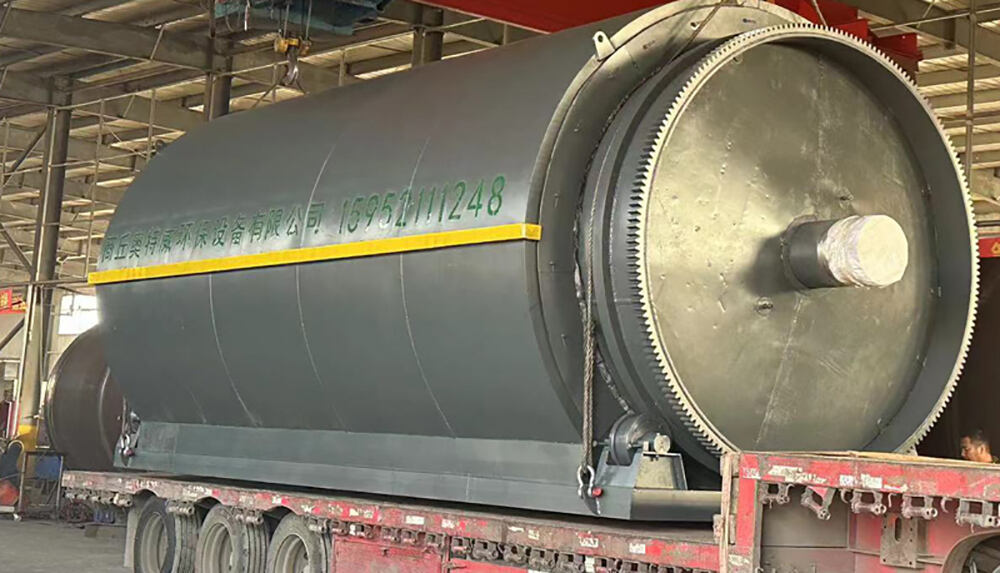Waste tires, waste plastics, and domestic waste are mainly composed of rubber (including natural rubber, synthetic rubber), carbon black and a variety of organic and inorganic additives (including plasticizers, antioxidants, sulfur and zinc oxide, etc.). Their thermal cracking refers to the high molecular fracture of the main chain with unsaturated bonds in the rubber under anaerobic or anoxic conditions and at the appropriate temperature, the products are mainly monomers, dimers and fragments, and the products are repolymerized into a variety of olefin, thereby removing volatile substances and forming solid carbon, and the products are mainly fuel oil, cracked gas and other storable properties The composition of source, carbon black and steel wire varies with pyrolysis method and pyrolysis temperature.
The pyrolysis temperature of waste tires, waste plastics and household waste is 200~450℃. The pyrolysis furnace adopts external heating, micro negative pressure and oxygen-poor pyrolysis process operation, and the furnace body is closed to ensure that the gas does not leak out during the production process, improve the thermal cracking efficiency, and fundamentally eliminate the unsafe hidden caused by the gas leakage during the production process suffer from and secondary pollution.

 Hot News
Hot News2024-09-25
2024-09-18
2024-09-12
2024-09-05
2024-08-30
2024-08-23

Copyright © 2025 by Shangqiu AOTEWEI environmental protection equipment Co.,LTD Privacy policy